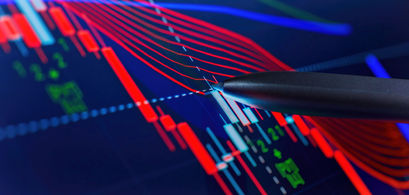Investors may trade commodities for either speculative purposes or as a hedge against a future price change. People familiar with stock-trading techniques may be curious about this investment option too. But as we'll explain later on, the strategies and risks associated with commodities are quite different than common stocks.
In this article, we're going to provide an introduction to commodity trading. We'll start by talking about the history of the commodities market. Then we'll run through the various types of contracts investors can buy. We'll finish by talking about futures contracts in more detail, as well as some of the hedging strategies used by individuals that trade commodities.
History of the Commodity Market
In the early 1840s, Chicago's infrastructure of rail and waterways made it a logical place for the mid-west farmers to meet with dealers that were willing to ship their harvests to markets around the country. Making such deals became an important exchange for farmers looking for a dependable place to sell their crops, and dealers that needed a reliable source of grain.
At first, a "spot" market evolved as farmers looking to find a buyer brought their grain to the Chicago market with the hope of selling it "on the spot" for cash. While this helped the farmer sell his product, the overall process was less efficient than it could have been.
The first "futures contracts" were likely handshakes between dealers and farmers; an agreement that outlined the purchase price and quantity of the grain delivered by the farmer at a future date. These handshakes eventually became written agreements, and speculators began trading in these futures contracts with the hope the laws of supply and demand would work in their favor.
By 1848, the Chicago Board of Trade (CBOT) was founded by 82 Chicago merchants. They settled into their first location above the Gage and Haines flour store at 101 S. Water Street, where it stayed until 1852. There was now an official organization that could help farmers find buyers, and provide for a more robust trading marketplace.
Trading Commodities
The commodities trade in the Chicago market started out as a way to deal in agricultural products. Today, the CBOT supports the trading of four product types: agricultural, metals, interest rates, and the Dow Index. In general, to create an attractive trading market for a commodity, its future price must be somewhat uncertain. It is this uncertainty that creates an opportunity for profit, thereby increasing speculator interest.
Agricultural Commodities
Farming products such as corn, soybeans (meal and oil), ethanol, oats, wheat, and rice are examples of agricultural commodities. Trading in these products is standardized in both quantity as well as condition. For example, agricultural products are traded in a raw / unprocessed state.
Metal Commodities
The most common metal commodities are gold, platinum and silver. The price of these metals is stated in dollars per ounce. The most familiar trading quantities on the CBOT include:
100 ounce Gold Futures
Mini-Sized Gold: 33.2 fine troy ounces of gold
5,000 ounce Silver Futures
Mini-Sized Silver: 1,000 troy ounces of silver
Dow Futures
The Dow Jones AIG Commodity Index, the Dow Jones Industrial Average Futures, and the mini-sized Dow make up the Dow futures. The strategy of trading in Dow futures is also called "trading the markets." With Dow futures, the investor attempts to predict the future direction of the stock market, and the Dow specifically.
Interest Rates
The last product type offered by the CBOT falls into the category of interest rates. The most common of the interest rate trades include Treasury bonds, fed funds, and municipal bonds. When trading in the interest rate market, the investor is attempting to capitalize on the long and short term changes in the yield curve. Said another way, the investor is taking a financial position that interest rates are going to rise or fall in the future.
Other Commodities
There are many other commodities that can be traded from tin to coffee beans, or stock indexes to pork bellies. As long as there is uncertainty around the future price of these items, there will be an interest in trading. As long as price movement exists, investor interest exists.
Commodity Exchanges
In today's world of specialization, domestic and international commodity exchanges have latched onto the concept of focusing in an area of expertise. The most robust exchanges in the world today, and their specialty commodities include:
New York Board of Trade (NYBOT): includes the trading of coffee, cocoa, cotton, orange juice and sugar. (Now a part of ICE.)
New York Mercantile Exchange (NYMEX): specializes in energy products such as crude and heating oil, gasoline, natural gas, coal, propane as well as metals such as gold, silver, platinum, copper, aluminum, and palladium. (Now a part of CME Group.)
Chicago Board of Trade (CBOT): specializes in bonds and more traditional commodities such as corn / maize, oats, rough rice, soybeans, soybean meal, soybean oil, and wheat. (Now a part of CME Group.)
Chicago Mercantile Exchange (CME): specializes in bond futures and more traditional commodities such as live and feeder cattle, lumber, beef, boneless beef trimmings, lean hogs, frozen pork bellies, fresh pork bellies, milk, and butter. (Now a part of CME Group.)
London Metal Exchange (LME): specializes in the trading of metals such as copper, lead, zinc, aluminum, tin, and nickel.
London Commodity Exchange / Euronext: includes the trading of commodities such as grains and meat. (Now known as NYSE LIFFE)
ICE Futures: the International Petroleum Exchange specializes in commodities such as crude and heating oil, natural gas, and unleaded gasoline.
Futures Contracts
As mentioned earlier, investors interested in commodity trading often participate in this market using futures contracts. A futures contract is a standardized agreement to buy or sell something (a commodity in this instance) at a future date, and at a pre-established price. The pre-established price is called the futures price, and the date is called the settlement date.
Because of the money involved, and because much of the trading is done on margin, the strategy adopted by most traders falls into one of the following two broad categories:
Speculators: includes investors that seek profits by attempting to predict where the commodity market is going, and are only interested in buying the commodity on paper.
Hedgers: includes investors that have a reason for possibly taking physical possession of the commodity itself, and are looking to protect themselves from price movements by adopting a hedging strategy.
Commodity hedgers typically include the producers and /or the consumers of the underlying commodity. For example, a wheat farmer might sell a futures contract to lock in a selling price for all or a portion of their crop. Hedging makes it much easier for farmers to plan their growing expenses around their expected revenues. In the same way a consumer of wheat, such as a flour mill, might be looking to lock in a purchase price.
Commodity Strategies and Risk
Finally, the real purpose of commodity futures, or any futures contract for that matter, is to facilitate the transfer of risk from one entity to another. On either side of any deal there are two parties. Each party has a different outlook on the future. Each participant is willing to take on the risk of price increases or declines over time.
That's what makes commodity trading so intriguing. An investor can find someone that thinks very differently than they do, and are willing to take a position in a commodity that opposes their own viewpoint. For traders or speculators that like the rush of a good competition, there aren't many investments more competitive than trading in commodities.
Next up in this series is an Introduction to Future Contracts.




